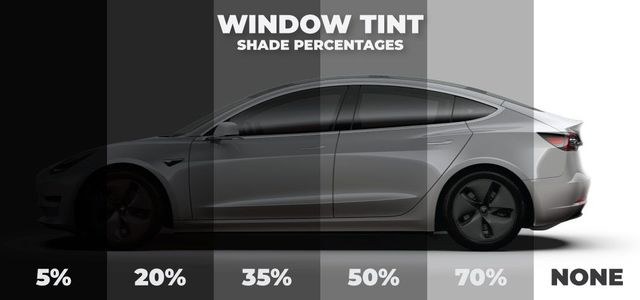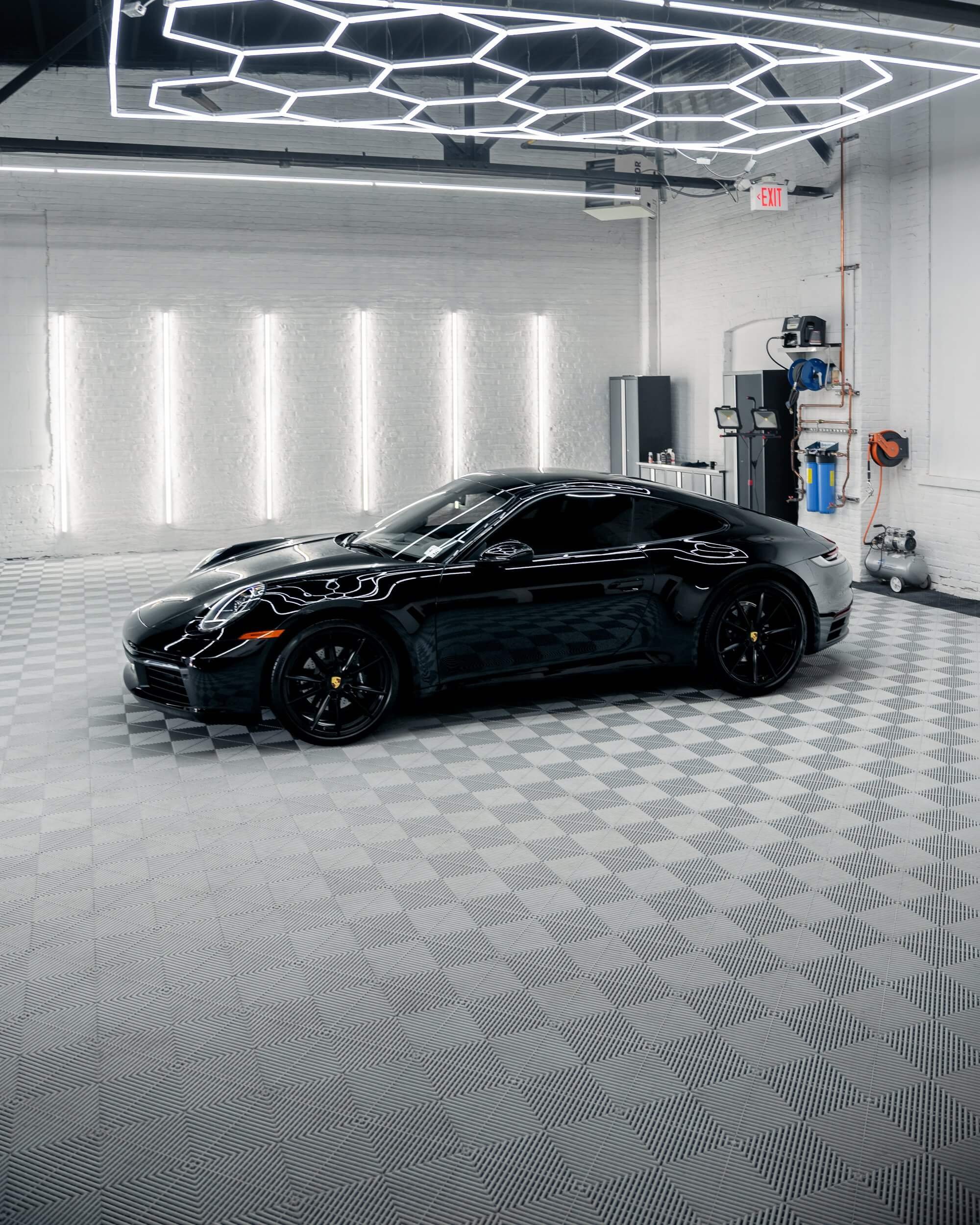Whatever You Required to Find Out About Auto Window Tinting for Your Automobile
Automobile window tinting is a sensible enhancement for lots of lorry proprietors. It provides advantages such as boosted convenience and power efficiency. Numerous tint movies deal with different requirements and choices. Nevertheless, recognizing legal regulations and picking the appropriate color portion is important. The setup process and correct maintenance also play considerable functions in making certain the long life of the color. What various other variables should one think about before choosing on window tinting?
Benefits of Auto Window Tinting
Although some automobile owners might neglect it, automobile window tinting offers various advantages that improve both the driving experience and the car's durability. One of the primary benefits is the reduction of warmth buildup inside the automobile, permitting a more comfortable trip, especially during hot weather condition. This can cause decreased reliance on cooling, boosting gas efficiency.Additionally, window tinting gives protection versus unsafe UV rays, which can create skin damage and fade indoor products in time. By obstructing these rays, the tint aids preserve the lorry's interior and preserve its resale value.Moreover, tinted windows can improve personal privacy and safety, as they make it harder for outsiders to see inside the vehicle. This included layer of protection can deter prospective burglary. Overall, automobile window tinting acts as a useful investment that adds to the lorry and both convenience's general health.
Kinds Of Window Color Films
When considering auto home window tinting, vehicle owners encounter a range of home window color movies, each designed to fulfill certain demands and choices. The very first group is dyed home window movie, which supplies a basic degree of privacy and UV defense while being affordable. Next, metalized films integrate tiny metal particles, mirroring heat and boosting longevity, although they may disrupt electronic signals.Ceramic films are one more choice, known for their remarkable heat rejection and clarity, using high performance without signal disturbance. Hybrid films incorporate qualities of dyed and metalized movies, striking an equilibrium in between price and functionality. Each type of window color movie presents distinct advantages, enabling automobile proprietors to pick based on their certain demands, such as heat look, budget plan, and control factors to consider. Understanding these choices is essential for making an educated decision concerning automobile home window tinting.
Comprehending Lawful Laws
When taking into consideration auto window tinting, it is critical to understand the legal policies that control tint darkness limits and windshield tint needs. These policies can vary considerably from one state to another, affecting what is permissible for vehicle proprietors. Acquainting oneself with these laws guarantees conformity and helps stay clear of possible penalties or fines.
Tint Darkness Limits
Exactly how can lorry owners ensure they stay certified with local regulations relating to window tinting? Understanding color darkness restrictions is essential. Each state has certain regulations that dictate the acceptable degrees of darkness for home window colors, which are gauged by Visible Light Transmission (VLT) percents. Usually, front-side windows need to permit a higher percent of light contrasted to back home windows. Some states might enable just 30% VLT for front windows, while the rear windows could be allowed to have significantly darker colors. To ensure compliance, automobile owners must seek advice from state guidelines or regional police for accurate details. In addition, licensed tinting experts can provide understandings about lawful limits, ensuring that vehicle owners make educated decisions.
Windscreen Tint Laws

State-Specific Laws
Steering through the landscape of state-specific regulations relating to vehicle home window tinting requires mindful attention to detail, as policies can differ substantially from one state to an additional. Each state has its own collection of regulations governing allowed tint percents, sorts of products, and positioning on automobile windows. For instance, some states permit darker tints on back home windows while banning them on front windows, while others have stricter total restrictions. Additionally, specific states mandate the use of particular products or need certification from installers. Failure to abide by these laws can result in penalties or the necessity to get rid of non-compliant tint. As a result, vehicle proprietors must consult their state's Division of Motor Autos or appropriate authority to assure adherence to regional regulations
Choosing the Right Tint Portion
When choosing the appropriate tint percentage for an automobile's home windows, one must think about different factors that impact both aesthetics and performance. Color percentages commonly vary from 5% to 70%, with reduced portions giving darker shades and higher portions enabling more light in. A darker color can enhance personal privacy and lower glow, while a lighter tint can maintain visibility and follow legal restrictions.Furthermore, individual preference plays a considerable role in this decision. Some individuals may prefer the streamlined appearance of darker colors, while others may prefer a much more open, ventilated feel. Furthermore, Homepage the automobile's purpose ought to be thought about; for instance, those utilizing their automobiles for business functions may choose lighter colors to keep a specialist look.Ultimately, the right tint percentage equilibriums individual style, convenience, and adherence to neighborhood laws, making sure a rewarding tinting experience.
The Setup Process
An effective installment of home window tint requires mindful attention to detail and the right tools. The procedure generally begins with extensive cleansing of the home windows to eliminate debris, dust, and dirt, guaranteeing appropriate adhesion of the movie. When the surface areas are prepared, the installer procedures and cuts the tint movie to fit each window accurately.Next, the movie is positioned on the glass, frequently using a solution to help with simple change and protect against air bubbles. Warm is often related to the film to conform it to the home window's curves, boosting its look and longevity. After verifying a smooth fit, the installer meticulously cuts any excess movie along the edges.Finally, the installer look for blemishes and verifies all sides are secure. This precise method is vital not only for appearances yet likewise for attaining the wanted performance advantages of window tinting, such as UV defense and warmth decrease.
Upkeep and Take Care Of Tinted Windows
Appropriate maintenance and treatment are necessary for preserving the stability of tinted home windows. Efficient cleansing strategies, the evasion of hazardous chemicals, and routine examinations for damages play crucial roles in ensuring longevity. By adhering to these guidelines, lorry proprietors can preserve the aesthetic and practical advantages of their window tint.
Cleansing Techniques for Tint
Preserving the my latest blog post clearness and longevity of colored home windows requires certain cleaning strategies tailored to the film's fragile surface. It is necessary to make use of a soft microfiber cloth to avoid damaging the tint while cleaning. A gentle remedy of water and a few declines of mild dish soap can efficiently remove dust and grime. It is a good idea to use the cleansing option to the fabric, instead of directly onto the colored surface area, to stop dampness from seeping right into the sides of the movie. Gentle, round activities need to be employed to clean up the home windows completely. Routine cleaning aids preserve visibility and protects against build-up, guaranteeing that the tint remains in prime condition over time. Complying with these methods will certainly prolong the life of colored home windows.
Preventing Harmful Chemicals
Although numerous family cleaning products are effective on different surfaces, they can posture considerable threats to colored windows. Chemicals such as ammonia, bleach, and certain solvents can break down the color movie, bring about staining and peeling. People need to go with pH-balanced cleansers particularly created for colored windows. Additionally, making use of soft microfiber fabrics will assist stop scratches and preserve the color's stability. Regular maintenance is crucial; subsequently, staying clear of extreme scrubbing or abrasive products is crucial. It is advisable to read item tags very carefully to confirm compatibility with window colors. By selecting the right cleaning services and devices, automobile proprietors can protect the look and performance of their colored windows, ensuring a longer life expectancy and peak performance.
Evaluating for Damage
Normal inspections of colored windows are very important for recognizing any type of indications of damage that may jeopardize their efficiency and look. Proprietors ought to try to find bubbling, peeling, or staining, as these problems can show inadequate setup or direct exposure to hazardous elements. It is a good idea to examine the edges of the movie where peeling off may check and begin for any type of scratches that can influence presence. Additionally, ultraviolet (UV) rays can cause the color to weaken over time, so monitoring its efficiency in obstructing UV light is crucial. If any type of damage is discovered, timely activity ought to be taken, which might include specialist repair service or substitute. Preserving tinted home windows not just enhances looks but also assurances continued defense for both travelers and the lorry inside.
Usual Misconceptions About Home Window Tinting
What mistaken beliefs border home window tinting for vehicles? Numerous individuals think that all window colors are prohibited, however policies differ by state, allowing for specific levels of tinting. Another usual misconception is that darker tints obstruct even more heat; nonetheless, the effectiveness of window movies depends upon their innovation instead than darkness. Some people additionally think that window tinting is only for appearances, neglecting its benefits, such as UV protection and glow decrease. In addition, many presume that window tinting will certainly harm their automobile's glass, yet skillfully applied tints can really enhance glass longevity. Lastly, there is an idea that window colors block exposure, yet top quality films are created to maintain clear sightlines while offering privacy. Comprehending these misconceptions aids consumers make notified decisions relating to window tinting, ensuring they take Discover More pleasure in the full variety of advantages it offers.
Often Asked Concerns
Just How Lengthy Does Window Tinting Typically Last?
The durability of window tinting differs based on variables such as setup quality, movie kind, and environmental conditions. Generally, premium tint can last anywhere from five to 10 years prior to calling for substitute or reapplication.
Can I Remove Home Window Tint Myself?
Eliminating home window tint oneself is possible, though it may be difficult. People should make use of a heat source and glue remover to reduce the process, but caution is recommended to stay clear of damaging the automobile's glass or inside.
What Devices Are Required for Do It Yourself Window Tinting?

Will Home Window Tinting Damage My Car's Glass?
Window tinting, when applied properly, usually does not damage an auto's glass. Nevertheless, inappropriate installment or low-grade movies might result in peeling off, gurgling, or damaging, possibly endangering the stability of the glass in time.
Can Tinted Windows Affect My Lorry's Resale Worth?
The influence of colored home windows on a car's resale value can vary. While some customers appreciate the added privacy and UV protection, others might view it as a potential issue, potentially impacting resale favorably or negatively. When taking into consideration auto home window tinting, lorry owners experience a selection of home window color films, each created to meet specific demands and preferences. When considering auto home window tinting, it is critical to understand the lawful policies that govern color darkness limits and windshield color needs. Normally, front-side home windows have to allow a higher percent of light contrasted to rear windows. Some states may permit just 30% VLT for front home windows, while the rear home windows may be permitted to have especially darker tints. Some states permit darker tints on rear home windows while forbiding them on front home windows, while others have stricter total limits.